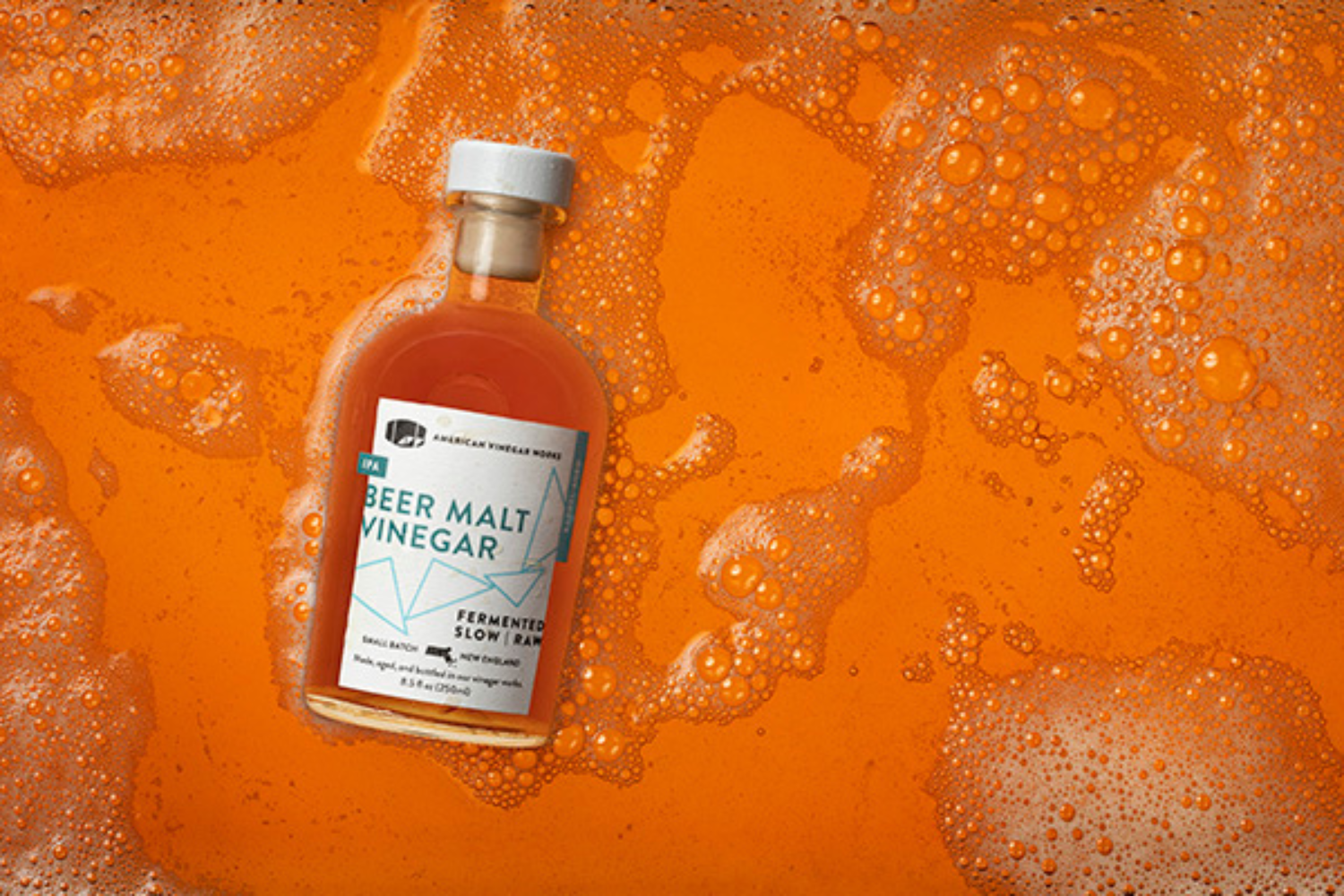Craft Beer Makes Malt Vinegar Better
A stalwart of condiment carousels from seaside boardwalks to proper pubs, malt vinegar is much more than a British pantry staple — it’s part of a graceful balancing act — adding much needed acidity to starchy potatoes and lightly seasoned white fish, without turning the careful crunch of a golden fry into a sad soggy mess. It’s the best friend that fish & chips can’t live without.
American Vinegar Works’ beer malt vinegar
Whereas bottles of Sarson’s or Heinz are mainstays for malt vinegar–purists, there’s a growing number of smaller brands putting their stamp on the classic. Coupled with a craft beer boom in the United States, beer vinegar, née beer vinegar, is beginning to move past its white-distilled-vinegar-dyed-brown-with-caramel-coloring stage, and into a reworking of wort (the liquid extracted from the mash process of brewing) that truly represents a new wave of microbreweries that care about the craft, starting with better ingredients.
Artisan Malt Vinegar
The modern movement started with Artisan Malt Vinegar in 2004, who brew their bottles in Cornwall, England, using Maris Otter malt (responsible for all of Britain’s best pales and ESBs) and Cornish spring water, before naturally fermenting it in oak barrels for a year. The resulting vinegar is rich with coffee and toffee notes, and nutty with a bitter dark chocolate depth — it’s also high acid enough that it can lighten up a savory beef stew, and level up a creamy aioli (also great for fish & chips!).
MadHouse Vinegar Co. dark malt vinegar
Coupled with a craft beer boom in the United States, malt vinegar is beginning to move past its white distilled vinegar with caramel coloring stage — now found forged of wort (the liquid extracted from the mash process of brewing) from true microbreweries. For example, since 2013, MadHouse Vinegar Co. in Cincinnati, Ohio, has highlighted top local breweries, including Listermann Brewing Company, MadTree Brewing, Rhinegeist and Streetside Brewery, and Bircus Brewery, But putting to use beer that otherwise would have been “poured down the drain” says Dean. MadHouse’s co-founders/ Justin Dean, a former chef, and Richard Stewart, a farmer created what they call a “bad-beer recycling program” by making beer vinegar out of spent grain leftover from the brewing process.
American Vinegar Works’ Rodrigo Vargas
Rodrigo Vargas began American Vinegar Works in 2018, running operations out of an old mill in Worcester, MA. In collaboration with the University of Maine, Vargas re-built a German “drip method” fermenter based off of schematics he found from the early 1800s, a process he believes yields the best and brightest vinegars. In keeping regional, Vargas wanted to represent New England, landing on Boston-based Harpoon IPA and Mayflower Brewing Porter from Plymouth, MA. “Super-hopped [beers] did not translate well for the vinegars,” states Vargas, who’s aiming to create elevated versions of classic malt vinegar, aging them in American whiskey barrels before releasing them to retail. “It allows us to develop more nuanced flavors in a process called co-fermentation — by adding flavors while it is still moving from alcohol to vinegar,” instead of infusing ingredients after the process is done.
While American Vinegar Works only produces about 500 gallons of each malt vinegar at a time — they also make 15 other varieties, including beer, cider, wine, rice, and mead/honey-based alcohol varieties — the onus is on the user to start bringing these beer vinegars to the table. Rodrigo suggests AVW’s IPA vinegar for sauteed mushrooms and their porter to brighten soups and stews, suggesting that as craft beer drinkers preferences are shifting, hopefully, so is that of beer vinegar connoisseurs.





